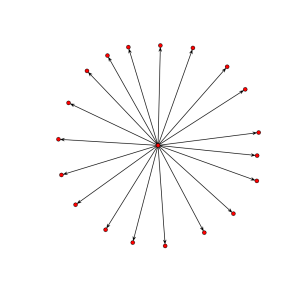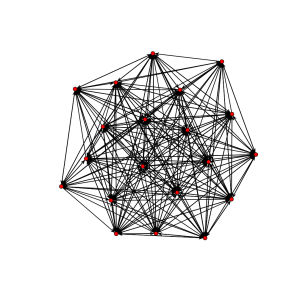A kind of introduction
Why I’m doing this work?
I have been applying the blogroom method during the past four semesters with about 800 students out of a total of about 1400 distributed in 20 different curricula, some of the Faculty of Medicine and some of the Faculty of Education Science.
I have being applying this method when teaching digital literacy or related subjects, so far.
Short description
To describe the method in a nutshell, there are only a couple of conventional lessons at the beginning of the course, where the students are told the basics of the method. Then, the teacher is available for some weeks in a computer room to help students when needed, to engage in discussions or to make seminars.
In the computer room the students are encouraged to help each other. The rest of the course life take place within the blog community. The teacher gives assignments in his or her blog and the students are supposed to write their essays as posts in their own blogs.
The assignments are not intended to “cover” a range of topics or to assess skills directly but are conceived as stimula to explore autonomously. We may say that assignments are chosen just to address some broad relevant topics.
In online courses where it is impossible to organize conventional lessons and other kind of meetings, the blogroom is supported with weekly virtual meetings.
Peculiarities of a blogroom
Besides the rough participation numbers and the distribution of grades, the teacher is left with a tangle of impressions and feelings, a very strong trace even if a subjective one.
Nonetheless, from such tangle of impressions some clear points emerge regularly:
- Something very different happens when the blogroom method “works”.
- The success of the method is very much peculiar to the curriculum. Even the degree of a priori acceptation – that is the number of students that decide to try the new method, since they have the freedom to choose between the new and the conventional approach – is variable, ranging from 10-20% to almost 100% depending on the curriculum.
- The most striking feature of a working blogroom is the emergence of an emotional component: a significant number of students get involved in a manner that is quite unusual in a conventional class.
- In a working blogroom a significant proportion of the students would like to continue and, as a matter of fact, the blogroom survives the term of the course.
In short, the blogroom appears to be a living being.
The problem
In the classroom the teacher follows each student separately and usually, the relationships among classmates are kept to a minimum.

On the contrary, in the blogroom, students are encouraged to engage in discussions with classmates and other people and not necessarily about the taught topics.

When students get the message, the blogroom comes to life in the shape of a network that is quite difficult to follow since a living network is a chaotic entity.
Of course, I remember well a lot of posts, comments and whole threads of discussions. I know very well many students and often I get a rather clear idea of their personalities. However, for sure a great deal of threads get lost and in my perceptions, the relative proportions may be distorted by my own feelings or preferences.
The idea
However, by its nature, the Internet has memory or, perhaps, is a kind of memory. It hosts life forms and often their traces impressed in the time course can be recovered. This happens to the blogroom, too. All the posts and the comment are retrievable from the feed aggregator and they can be analyzed by means of mathematical and graphical tools.
The idea is to try to construct ways to look at the blogroom in its entirety from different perspectives and having the possibility to focus on specific aspects.
We could put it in the following way. The blogroom is a living entity but its multidimensional nature may be quite complex and therefore we need instruments that allow us to look at it in a reliable way.
I believe that the idea could be interesting being aware that 1) the subjective perception of the teacher remain fundamental, 2) mathematical devices are not magic.
PS: I will be very grateful to anyone willing to tell me about similar works or papers on this subject.
Sociograms have been made with Stanet.
Io non ti fermo davvero … associa associa … che io imparo …
altra associazione di idee:
http://en.wikipedia.org/wiki/The_Fun_They_Had
(qualcuno mi fermi!!)
Mentre leggevo m’è venuto in mente Il Grande Fratello di Orwell. Il che non è necessariamente legato all’aspetto negativo di “controllo” che si legge nel libro, ma ha comunque suscitato nel mio cervello (malato) un’associazione di idee. Non so se questo commento possa entrarci qualcosa ma così come nel romanzo si voleva inculcare un modo diverso di concepire la vita, nei “controllati” da parte del regime, così da quel che ho capito, il prof vuole mostrare un modo diverso di insegnamento. Le analogie le trovo nell’ambito del “guardare la classe nella sua interezza da numerose prospettive”, ma a differenza del romanzo, questo non viene fatto per reprimere lo sviluppo proprio dell’ecosistema, anzi, semmai per promuoverlo tramite l’uso della tecnologia.
A questo punto la prossima associazione di idee che mi viene sono gli studi sull’ecoetologia, cioè quei modelli matematici che si applicano agli studi di popolazioni animali o vegetali (soprattutto se in estinzione), considerando le variabili ambientali e la valenza ecologica degli individui facenti parte della popolazione.
Anche Darwin prima di scrivere il suo trattato sull’evoluzione delle specie si era sciroppato tutti i trattati degli economisti classici tipo Malthus e Smith e secondo me possono ancora dire molto.
Che sia l’evoluzione naturale del metodo di insegnamento? cioè, i miei pronipoti alle elementari sperimenteranno un sistema analogo?